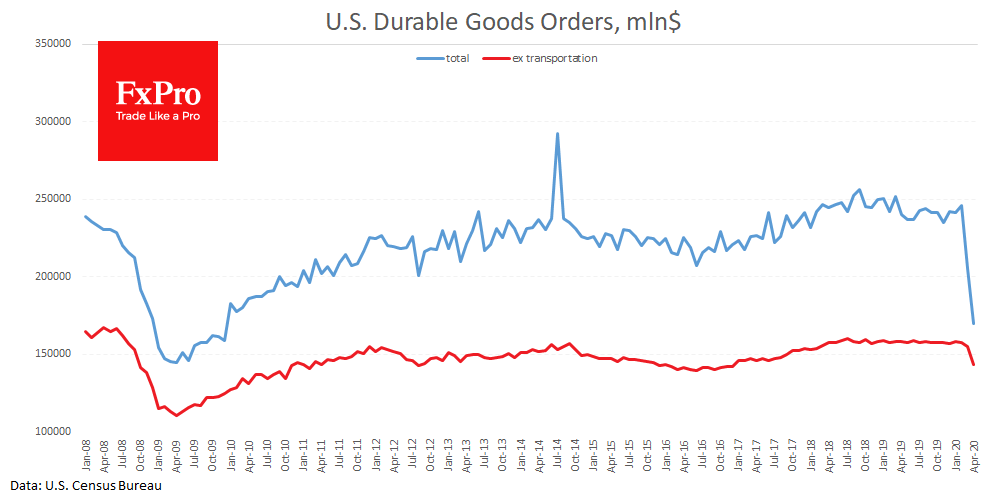U.S. weekly jobless claims still elevated; core capital goods orders fall
May 28, 2020 @ 18:21 +03:00
The number of Americans filing for unemployment benefits held above 2 million last week for a 10th straight week amid job cuts by U.S. state and local governments whose budgets have been decimated fighting the COVID-19 pandemic and more second-wave layoffs in the private sector.
Signs the economy was spiraling deeper into recession were underscored by other data on Thursday showing business spending on equipment plummeting in April. The economy contracted in the first quarter at its steepest pace since the 2007-09 recession. Data on the housing market, manufacturing and consumer spending point to a collapse in gross domestic product in the second quarter at a pace last seen during the Great Depression.

Initial claims for state unemployment benefits totaled a seasonally adjusted 2.123 million for the week ended May 23, from a revised 2.446 million in the prior week, the Labor Department said. Economists polled by Reuters had forecast initial claims falling to 2.1 million in the latest week from the previously reported 2.438 million.
Though claims have declined steadily since hitting a record 6.867 million in late March, they have not registered below 2 million since mid-March. The astonishingly high level of claims has persisted even as non-essential businesses are starting to reopen after shuttering in mid-March to control the spread of COVID-19, an indication it could take a while for the economy to dig out of the coronavirus-induced slump.
U.S. stocks were trading higher, but simmering tensions between the United States and China kept investors on edge. The dollar eased against a basket of currencies. U.S. Treasury prices dipped.
The second wave of layoffs could grow bigger, with Boeing announcing on Wednesday it was eliminating more than 12,000 U.S. jobs and also disclosing it planned “several thousand remaining layoffs” in the next few months.
Last week’s applications raised the number of people who filed claims for unemployment benefits to above 40 million since March 21. Economists cautioned this figure does not represent the number of job losses as not all applications are approved and some people could be submitting more than one application, while others could have since found employment.
They said the focus should be on the number of people still receiving unemployment benefits to get a clear picture of the labor market’s health. These so-called continuing claims are reported with a one-week lag and are being watched to assess how quickly the economy will rebound as businesses reopen and the effectiveness of the government’s Paycheck Protection Program.
Continuing claims fell to 21.052 million in the week ending May 16 from a record 24.912 million in the prior week. The continuing claims data covered the period during which the government surveyed households for May’s unemployment rate.
Continuing claims increased between the April and May survey periods, suggesting a surge in the unemployment rate from a post-World War Two record of 14.7% last month.
Economists believe the economy slipped into recession in March. The are expecting GDP will drop in the second quarter at as much as a 40% rate.
U.S. weekly jobless claims still elevated; core capital goods orders fall, Reuters, May 28







